- Chelsea Carnes
- https://sites.google.com/view/carnes-portfolio
- Project Specialist
- Guitars, Rocketry, Robotics Advanced Technological Education
- https://www.sfcollege.edu/grrate/
- Santa Fe College, GRRATE
- Shellie Banfield
- Director, Davis Center
- Guitars, Rocketry, Robotics Advanced Technological Education
- https://www.sfcollege.edu/grrate/
- Santa Fe College
- Cheryl Calhoun
- Dean of Access & Inclusion
- Guitars, Rocketry, Robotics Advanced Technological Education
- https://www.sfcollege.edu/grrate/
- Santa Fe College
- Cheryl Canova
- Director, Andrews Center
- Guitars, Rocketry, Robotics Advanced Technological Education
- https://www.sfcollege.edu/grrate/
- Santa Fe College
- Gina Greenidge
- Watson Center Director
- Guitars, Rocketry, Robotics Advanced Technological Education
- https://www.sfcollege.edu/grrate/
- Santa Fe College
- Susan Warshaw
- External Evaluator
- Guitars, Rocketry, Robotics Advanced Technological Education
- https://www.sfcollege.edu/grrate/
- Santa Fe College
Facilitators’
Choice
Choice
Public Discussion
Continue the discussion of this presentation on the Multiplex. Go to Multiplex






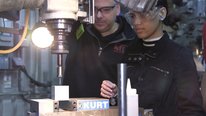
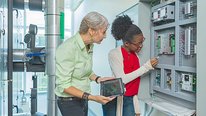
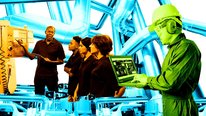
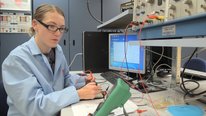
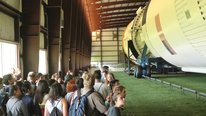

Chelsea Carnes
Project Specialist
Welcome to our page! This video highlights the goal and strategy of the Guitars Rocketry Robotics Advanced Technological Education Project (GRRATE). We welcome your comments and questions.
Does your work focus on increasing diversity or leveraging creativity to broaden participation? What strategies has your school used to tackle problems of under-representation in STEM? How have you designed your STEM programs to outreach to rural and under-resourced students? What are some other programs that you are aware of that use fine art or design to teach STEM skills?
If you enjoyed learning about our project, please click the thumbs up to vote for the public choice award!
Andy Sheppard
Leslie Koren
Shellie Banfield
Deb Hall
What a super fun and creative idea to attract students to pursue a STEM related careers!
We have conducted “STEAM ROCKS!” K-12 hands-on activity workshops where we highlight that you need to be creative and think outside of the box when working within any science, technology, engineering, or math related career. Below are a few examples of our STEAM ROCKS! related activities:
Break up students into the Write It! teams and Do It! teams of 4 students each. The Write It! teams are taken to a room where they see a crazy design made with straws, cups, and pipe cleaners and are instructed to write a procedure on how to build the design. The Do It! teams are in a separate room learning about Golden Rectangles and Golden Spirals by watching “Donald Duck in Mathmagic Land”. Then the teams swap rooms. When the Do It! teams walk into the room, all they have are the Write It! teams’ instructions on how to build the crazy design and a bag of components. They are not allowed to see the original design that the Write It! teams saw. Once the Do It! teams have attempted to build the design, Write It! teams are invited back in and both teams compare the original design to the Do It! teams design. We end the workshop by doing the following:
Leslie Koren
Wonderful topic and video! Such an important angle in STEM fields for entry level learners. I learned from watching! Thanks for this work.
Cheryl Calhoun
Shellie Banfield
Chelsea Carnes
Chelsea Carnes
Project Specialist
Thanks for watching, Leslie! I'm glad that you got something out of it.
Patti Curtis
Robert Noyce/Ellen Lettvin STEM Education Fellow
Thanks for bringing STEM to a new cadre of students. I like the course title - it is broad enough so show STEM is everywhere. How did you recruit them? What happens next? Is their guidance provided to steer these students toward a pathway, degree and career in STEM?
Holly Morin
Shellie Banfield
Chelsea Carnes
Chelsea Carnes
Project Specialist
Hi Patti, thanks for watching. I also think the title "Wide World of Science" is nicely broad and approachable; we didn't make it up, we actually took it from an existing accredited course at FAMU. We recruit students through many outlets: 1) We intentionally placed the course at our three rural centers which typically have limited course offerings, so many of the rural students already enrolled there were bound to self-enroll when an exciting new course was presented 2) We are a two year college with dual enrollment matriculation agreements with several rural high schools, so many of our students have come from high school dual enrollment programs 3) We rely on a community advisory board and several outreach programs and initiatives that were already active in our area to help spread the word to the larger community. We often present to and partner with these groups to maintain contact and mutually beneficial relationships.
Holly Morin
Ariel O'Brien
Patti Curtis
Chelsea Carnes
Project Specialist
We would like to grow this program into a pipeline of STEM learning. For now in our second year, we are focused on providing positive early college experiences that improve attitudes about STEM, teach entry-level STEM skills, introduce STEM career options, and improve STEM self-efficacy.
Holly Morin
Holly Morin
Love the concept of a "pipeline of STEM learning"- could you elaborate more on these future plans?
What a fantastic project with an innovative approach- excited to follow this project as it continues to evolve!
Cheryl Calhoun
Dean of Access & Inclusion
The Guitar, Rocketry, Robotics, Advanced Technical Education project has been a really fun project to work with. Engaging students in challenging hands on learning has been rewarding as they learn about opportunities for their future that they never considered. We started from the perspective that many of our rural, low income, and underrepresented students aren't engaging in STEM because they simply aren't aware of the opportunities for them. There are also a lot of myths and stereotypes about who belongs in these fields. We set out to debunk these myths and give students a rewarding experience that will open up opportunities for their future.
Holly Morin
Javan Brown
Gina Greenidge
Chelsea Carnes
Lynn Farrin
An innovative way to support STEM for all! This project spoke to me as Maine has so many of the same challenges. We also share the belief that students may not be readily engaging in STEM because they don't 'see it' around them and/or believe STEM only 'lives' in big, urban centers. Are you seeing this idea supported in your research and what other trends are emerging?
Heather Griller Clark
Shellie Banfield
Chelsea Carnes
Shellie Banfield
Director, Davis Center
Absolutely.... our classes are taught at our rural locations in North Central Florida. Many of our students attend very small high schools without many STEM course options due to the size of their schools. Providing this entry level college course to get students excited about STEM careers is our way of reaching our rural learners.
Holly Morin
Jennifer Kidd
Any project that starts with the word Guitars is on to something! What wonderful ideas for recruiting diverse audiences to STEM! Have you seen the Circuit Playground Express activity that allows kids to make guitars from a very simple circuit? Maybe some of your students can help other, younger students explore STEM too.
Shellie Banfield
Chelsea Carnes
Chelsea Carnes
Project Specialist
Oh cool link, thanks for sharing! I'm familiar with Adafruit hardware but hadn't seen this specific example. The earlier we can introduce positive, fun, creative, STEM learning, the better. (This would be a fun project for all those parents suddenly teaching their kids from home right now!)
William Smith
Another stellar example of how Santa Fe College works to help students realize their potential. As someone who teaches at that center, I can tell you firsthand how excited those students are about this program; I have overheard them talking between classes and have promoted their engagement in our classes. As those examples illustrate, this program acts as a bridge to bring those students into the college and help them go where they dream. I am very proud to be a part of such an innovative college dedicated to enabling student success.
Cheryl Calhoun
Chelsea Carnes
Chelsea Carnes
Project Specialist
Thanks for watching and sharing your comments, William! Go Saints!
Andy Sheppard
I'm proud of my colleagues at SF for this outreach work and increasing access and interest in these fields.
Cheryl Calhoun
Chelsea Carnes
Chelsea Carnes
Project Specialist
Thanks for watching and the kind comment, Andy!
Chelsea Carnes
Project Specialist
I'm enjoying these comments! Fun side note, I recorded the background music to this video on one of the guitars we built in this program :)
Holly Morin
Audrey Shor
Gina Greenidge
Allison Master
Lorna Quandt
Javan Brown
Javan Brown
GRRATE is a great concept that I truly believe will have a lasting impact on our community. So much so, it inspired project Blast Off! (rocketry) for the SF My Brother's Keeper program 3rd grade mentoring initiative for 2020-2021.
Audrey Shor
Gina Greenidge
Chelsea Carnes
Cheryl Calhoun
Shellie Banfield
Shellie Banfield
Director, Davis Center
So cool to hear about this spin off!
Chelsea Carnes
Sergio Caballero
I can't describe how much of an honor and a pleasure it's been to teach these students and watch them develop their problem solving, math and manual skills. Little did they know how much science, tech, engineering, and math was involved in building a guitar.
Holly Morin
Audrey Shor
Chelsea Carnes
Shellie Banfield
Marjorie Bequette
Director
Thanks for your video and for the work behind it.
It sounds like you are asking students about their experience and attitudes with surveys while they are in the course. How are you planning to follow up with them beyond their time in the course -- and what are you hoping to see them do?
Chelsea Carnes
Cheryl Calhoun
Dean of Access & Inclusion
We just finished our first year of implementing this curriculum. For the future, we'd like to track the students to see how they move forward in their academic progression. There are many questions we can ask here: Are they more likely to choose a STEM major? Are they more likely to take advanced math & science courses?. These longitudinal questions are beyond where we currently are in this project. They will however need to be asked and evaluated to determine the long term efficacy of this project.
Chelsea Carnes
Lorna Quandt
Beautiful video, and what a fantastic project. I love the idea of using guitar building as a long-form lesson in multiple topics. So cool!
Chelsea Carnes
Cheryl Calhoun
Dean of Access & Inclusion
It was really fun to see the students engage with these topics. I had the privilege of teaching the robotics portion of this project in the fall. I had one student who when we started the course could not hold a nut and turn a screwdriver to attach a part to their robot. By the end of the semester they were leading their team in evaluating problems and designing new attachments for their robot to solve the problems. Also, encouraging was listening to them dream about the types of jobs they wanted to do in the future.
Sarah Dunton
Chelsea Carnes
Maya Israel
What a wonderful program and video. This is such a wonderful video. I'd love to learn more about this project in Gainesville! Do you also look at outcomes for participants with disabilities?
Chelsea Carnes
Cheryl Calhoun
Dean of Access & Inclusion
Hello, Maya. We are working to ensure all of our digital learning materials are accessible. We just finished our first year implementation, so we are reviewing curricula and using principles of Universal Design of Learning to improve them. There will be some challenges with the hands-on physical nature of the projects, but they should be doable for a wide range of participants. I'd love to chat with you some time about how we can best ensure outcomes for participants with disabilities.
Chelsea Carnes
Heather Griller Clark
Love this project! Our work also focuses on broadening participation in STEM, specifically for previously incarcerated youth. Can you share the student assessment you are using?
Chelsea Carnes
Cheryl Calhoun
Dean of Access & Inclusion
We've started with the S-STEM Survey. There are two good articles about this survey that are good to review. The Development and Validation of a Measure of Student Attitudes Toward Science, Technology, Engineering and Math (S-STEM) and Using the S-STEM Survey to Evaluate a Middle School Robotics Learning Environment.
Chelsea Carnes
Janice Cuny
This project has a lot of potential. How scalable is it? Are there materials and curricula that others can get? How much does the PD and the course materials and staff to teach ot?
Chelsea Carnes
Cheryl Calhoun
Dean of Access & Inclusion
This summer we are reviewing and aligning the curricula based on what we learned from our first year implementation of the project. We are also reviewing for universal design. Our plan is to be able to share the curricula for use by other institutions.
During the first year, we held all of our PD onsite. We worked with faculty across disciplines including various sciences, technology and math. We also included our student support personnel (advisors, tutors, student support specialists) so they understood the program more intimately and could assist with recruitment and student support. The instructor PD focused on learning the hands-on projects (guitar, rocketry, robotics). We worked with the STEM Guitar program for the guitar portion, and then developed our own PD for rocketry and robotics. As we review the curriculum, we are also looking at the instructor PD for improvement. We still have some work to do, but I believe we can scale this and roll it out for other institutions. Either community college or high school level.
Chelsea Carnes
Janice Cuny
Thanks Maya. It does sound like there's lot still to be done. It would be great if this eventually ended up in classrooms all over. I know there are lots of schools looking for ways to integrate computing K-5.
Chelsea Carnes
Maya Israel
Renee Fall
More STEM curricula should be so engaging to students! I am also working on a project to bring an engaging CS curriculum to high school students, mainly in rural and urban, minoritized communities. We are offering a concurrent enrollment (CE) course that is taught by authorized high school teachers, so students will earn college credit. (More in this video). You mentioned that the GRRATE courses are dual enrollment, which I assume means taught at college campuses by college instructors. In rural areas, is transportation an issue for these students? What are the impacts on the high schools when students attend courses on the campuses? Could you imagine preparing high school teachers to offer this through CE or "college in high school" programs?
Chelsea Carnes
Gina Greenidge
Watson Center Director
3 of the 4 centers that the GRAATE courses are taught at have a committed relationship with the school districts in which dual enrollment is supported by both entities. Our college intentionally placed our centers in rural areas to serve the residents of our counties so that transportation does not become an issue for the students in the area. Specifically, for my center, students who are dual enrolled can take a bus to their high schools, and walk to my center. Moreover, all of our college classes are taught on campus so students get the feeling of being on campus and can utilize all the resources of the college. Very much like your program (CE), the GRRATE classes attempt to introduce STEM to students who would otherwise not be interested or qualify for some STEM classes, so there are not prerequisites for the classes. I definitely can see where any of the modes of the GRRATE project could be offered through your CE program! This summer we are reviewing and aligning the curricula based on what we learned from our first year implementation of the project for universal design. Our plan is to be able to share the curricula for use by other institutions soon!
Chelsea Carnes
Cheryl Canova
Director, Andrews Center
Just to add to Gina's comments. At the SF Andrews Center, we offer the VEX Robotics class as a part of the GRRATE program.. We've hosted a LEGO Robotics program for at least 7 years as an after-school and summer program for ages 8-14, and we also have a group that has participated in competitions for 3 years. We definitely support the need for more STEM classes being introduced at an earlier age,and by being close partners with our local schools, we both benefit. Hands-on learning and bringing excitement to the classroom, at any level, is definitely exciting and motivating to students!! We do have some issues with transportation in the evening, but our buildings are within walking distance. One of our buildings is just a block away from our high school and was built specifically with dual enrollment in mind. Possibilities for this program are endless!!
Chelsea Carnes
Jameela Jafri
Project Director
I appreciate the STEAM approach of the curriculum. I am curious about the next step for students who participate in the program. Can you also share little about what you're learning from evaluation about the impact on students' identities, or on other outcomes the project has identified. It sounds like this program is doing wonderful work in expanding access to STEM opportunities in places that may not have too many programs.
Chelsea Carnes
Michael I. Swart
Wow. What a fun and engaging project based learning approach. You mention so many STEM skills with matching outcomes for measurement, basic algebra, physics of motion, tool use, lab safety, chemical knowledge, materials, crititcal thinking, experimentation, data analysis and problem solving. In addition to the pre / post tests evaluating changes in students' attitudes about STEM coursework and careers, does the program also evaluate learning outcomes on the aforementioned skills? Also, you mention the validated pre/post measure - can you expound a bit about that measure - was it internally/externally developed, and then validated via EFA/CFA? A validated and reliable measure of student attitudes towards STEM is a great resources for so many projects!
Chelsea Carnes
Cheryl Calhoun
Dean of Access & Inclusion
Michael, thanks for viewing our video, and for the great feedback.
Yes, we are evaluating learning outcomes. We taught the course in the classroom for the first time in Fall 2019, and again in Spring 2020. As with all new curriculum, we learned a lot during these two semesters. We are currently working though our curriculum verifying learning outcome alignment across the curriculum and ensuring activities and evaluations line up with the intended outcomes. We are also reviewing for clarity of instructional design including universal design for learning principles.
For the pre/post measure, we used the S-STEM (see discussion post above). It has been validated in at least two other settings (links to the publications are also included above). It has not been validated in a community college environment. On our radar for a future project is to replicate the validation process in our college.
Chelsea Carnes
Nicole Keith
As an academic advisor at one of the center locations that offers GRRATE classes, I have the opportunity to talk with students about this amazing program. The interest among students and community members is impressive, and many of the students who have participated have talked with me about embarking on new STEM career paths they did not previously consider. Thanks for your hard work on this project! I look forward to seeing how it continues to evolve.
Chelsea Carnes
Chelsea Carnes
Project Specialist
Thanks, Nicole. It really helps with our recruitment efforts to have the support of great college advisors like yourself!
Barbara Elliott
Excellent video presentation!
Chelsea Carnes
Susan Warshaw
External Evaluator
As the GRRATE external evaluator, I have been most impressed with the spirit of collaboration that drives everything this team strives to accomplish. Their video presentation is just another example of how the GRRATE team starts simple and then picks up steam through collaboration with internal and external stakeholders. The team welcomes feedback and leverages that feedback to continuously improve their program.
Chelsea Carnes
Kimberly Smith
Hi Susan,
I am so glad to see that you are involved with this :) I love seeing this effort to bring the Arts and STEM together, I shared the GRRATE video on my Facebook page, though it was unclear as to whether or not doing so, and providing my info here translates to a 'vote'?
Chelsea Carnes
Susan Warshaw
External Evaluator
Kimberly,
Thanks for participating. You are registered and should be able to vote.
Chelsea Carnes
Maisha Moses
I enjoyed the video! It looks like a wonderful project! Do you think it would be possible to establish this program as a high school course or course sequence?
Chelsea Carnes
Gina Greenidge
Watson Center Director
Yes Maisha! We currently have entry level dual enrolled students enrolled in the classes. Our intention is to get them excited about learning about building guitars, robots, and rockets while unknowingly learn math and science skills along the way. I could definitely see this being infused in the Algebra Project curriculum!
Chelsea Carnes
Suzanna Rose
What an inspiring project and video! What you are doing and how you are doing it is the way forward to diversify the STEM workforce. Congratulations!
Chelsea Carnes
Cheryl Calhoun
Dean of Access & Inclusion
Thank you. We've all really enjoyed working with this project. I look forward to expanding our reach and helping other schools incorporate these practices into their STEM curriculum.
Jennifer Mullis
Awesome job!
Audrey Shor
Wow! What a great video and fantastic project! Are there opportunities for under-performing, perhaps under-stimulated, students to participate in the GRRATE program? While I am a higher ed educator, when I can identify such students in my own courses early in their academic pursuit, their trajectories through the program make 180s, which is one of the most rewarding aspects of my work. One of the most successful interactions I have in stimulating and motivating students who are underrepresented and appear to be struggling with coursework is to engage them in research projects that ease them into the act of research, while reinforcing the material they are learning in the coursework. However, one major hurdle to this is that this population often works nearly fulltime while attending University, which means they are already spread pretty thin from a time management perspective. I find that being more flexible with my time in guiding students with these circumstances to be most helpful in successfully retaining their interest and time, which translates to improvements in their coursework. Thank you for supporting underserved students and exciting them about STEM disciplines in such meaningful ways.
Cheryl Calhoun
Dean of Access & Inclusion
Audrey, thank you for your feedback and thoughts. One of my future visions for this course is to more purposely embed math, reading and writing skills that might have previously been considered remedial, or developmental. Imagine if students can participate in a course like this and come out with the refresher needed to enter college level math, or to be better prepared for their other college study requirements. It may take more than one course, but could be doable in a two course sequence.
Audrey Shor
Oh that would be amazing Cheryl, on so many levels! So many of our students come in requiring remedial math and english; what a more meaningful way of doing this. I could see a summer program leading up to their fall enrollment. Engaging with the material like this would also instill study and application skills that often cause hiccups in the transition to undergrad.This project is so inspirational! I'm at Saint Leo...would love to collaborate on this if there's room for it.
Jennifer Bourgeault
Love the concept of guitars, rockets and robotics. What an exciting project and from the comment from one of the other posters, the students think so too! Other than the visit to NASA, are there opportunities for students to visit other businesses to see a suite of STEM careers that relate to the skills they are developing in the program?
Cheryl Calhoun
Dean of Access & Inclusion
Jennifer, thank you for your comments. Part of the project is to work with local employers to create videos about their work site. This will be part of our third year implementation. In future iterations, we hope to expand site visits as well. Here is a YouTube video contributed by one of our local employers, Jackson Stoneworks. The purpose of this video is to show how technology is incorporated into advanced manufacturing.
Paul Seeburger
I enjoyed your video very much! Your project looks like tons of fun for both students and faculty. I saw that some of these students did compete in Lego Robotics competitions. Was there any additional competition built into this project? I believe that competition can foster greater student commitment and buy-in as well as pride in their accomplishments. For example, do you give awards for best-looking guitar? Or for best sounding guitar, etc.?
I also think it's wonderful that you are working with the local employers. I am sure this will be a great resource for your students as well as for these employers.
Shellie Banfield
Director, Davis Center
I like the awards angle that you suggested. Students really take the artistic component of their guitars and their rockets especially seriously when working on their projects. We should include an award voted on my their classmates for "most artistic" rocket or guitar or robot! Maybe we can get our students to create the award using our 3D printer and, of course, make a class project out of making the award. Great stuff!